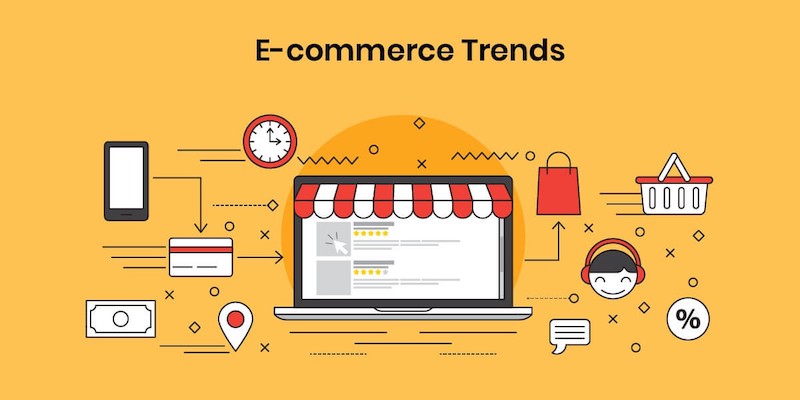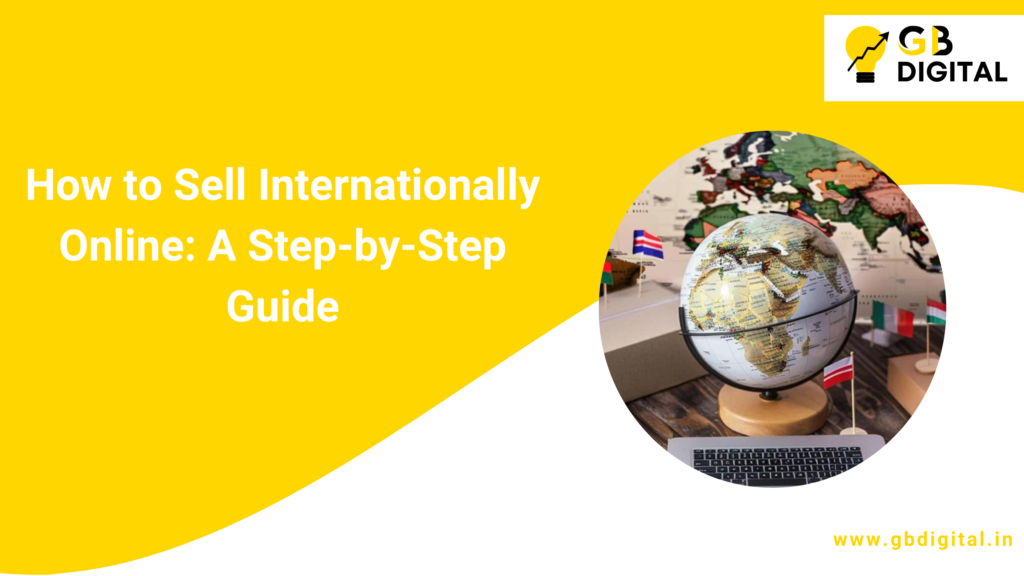In today’s globalized world, selling internationally online has become an exciting opportunity for businesses of all sizes. With access to a global customer base, businesses can scale quickly and unlock new revenue streams. However, expanding into international markets requires careful planning, understanding of logistics, and adapting to different market needs.
In this article, we’ll explore how to sell internationally online, covering everything from market research and logistics to marketing strategies and compliance with regulations. Whether you’re a startup or an established brand, this guide will help you navigate the complexities of global e-commerce and successfully enter new markets.
Why Selling Internationally is Important for Growth
Access to New Markets
Selling internationally opens your business to new markets, allowing you to tap into customer bases that may not be saturated by competitors. This can lead to increased sales and brand recognition.

Key Benefits:
- Diversification of Revenue: Reduce reliance on one market by selling across multiple countries.
- Brand Expansion: Build a global presence that strengthens your brand’s reputation.
- Long-term Growth: Access to larger customer bases enables sustained growth over time.
E-commerce Trends and Global Reach
The rise of e-commerce platforms and logistics solutions has made it easier than ever for businesses to sell internationally. With more consumers shopping online across borders, it’s crucial for businesses to capitalize on this trend and position themselves for international success.

Conducting Market Research: Identifying Target Markets
Analyze Market Demand
Before diving into international sales, it’s important to understand which markets have the highest demand for your products. Tools like Google Trends, Statista, and SimilarWeb can help you assess global search trends and identify countries where your products may perform well.

Steps for Market Research:
- Analyze market size and demand for your product in different regions.
- Identify trends and cultural preferences that may affect purchasing decisions.
- Research competitors in the target markets to gauge market saturation.
Understand Local Preferences and Cultural Differences
Selling internationally requires adapting to local preferences, which can vary significantly from one country to another. For example, customers in some regions may prefer certain colors, packaging styles, or marketing messages. Understanding these nuances can give you a competitive edge.

Considerations for Local Adaptation:
- Language and communication style preferences.
- Cultural norms around shopping, pricing, and promotions.
- Local holidays and events that influence buying behavior.
Setting Up Your Online Store for Global Sales
Choosing the Right E-commerce Platform
To sell internationally, you need an e-commerce platform that supports global transactions, currencies, and shipping. Popular platforms like Shopify, BigCommerce, and WooCommerce offer international capabilities, including multi-currency support and integration with global shipping providers.

Features to Look For:
- Multi-currency support for global customers.
- Integration with international payment gateways.
- Built-in language translation tools.
Implementing Multi-Currency and Language Options
To make your online store more user-friendly for international customers, it’s important to offer multi-currency options and language localization. Displaying prices in the local currency and offering product descriptions in the local language can boost trust and increase conversions.

Benefits of Localization:
- Improved customer experience: Customers are more likely to purchase if they can shop in their own language and currency.
- Higher conversion rates: Providing localized pricing reduces friction in the buying process.
Navigating International Shipping and Logistics
Partnering with Global Shipping Providers
International shipping is one of the most critical aspects of selling online globally. Partner with reliable shipping providers such as DHL, FedEx, or UPS to ensure fast and secure delivery. Many e-commerce platforms offer built-in integrations with shipping providers that calculate real-time shipping costs.

Key Considerations:
- Ensure you understand shipping costs, customs duties, and taxes for each country.
- Offer multiple shipping options, including express and economy delivery.
Handling Duties, Taxes, and Customs Regulations
Selling internationally requires compliance with local customs regulations, import duties, and taxes. Each country has its own rules regarding what can be imported, how much tax is charged, and how these charges are calculated. Research the customs and tax requirements of your target countries to avoid delays or extra costs.
%20(1)%20(1).jpg)
Tips for Managing Duties and Taxes:
- Use Delivered Duty Paid (DDP) shipping to cover customs fees upfront.
- Clearly communicate shipping times, duties, and taxes to customers to avoid surprises at checkout.
Marketing Your Products to an International Audience
Tailoring Marketing Strategies to Local Audiences
Your marketing strategies need to resonate with customers in each target market. This requires localizing your marketing campaigns by adapting content, messaging, and promotions to fit the cultural context of the region.

Steps for Localizing Marketing:
- Translate ads and content into the local language.
- Adapt your social media and email marketing campaigns to align with local holidays, events, and preferences.
- Collaborate with local influencers to reach new audiences.
Leveraging Global Marketplaces
Global marketplaces like Amazon, eBay, and Alibaba offer a great starting point for selling internationally. These platforms have an existing customer base and provide logistics solutions to help with shipping and customer service.
Benefits of Global Marketplaces:
- Access to millions of international customers.
- Simplified logistics and payments through the platform.
Future Outlook: Emerging Trends in Global E-commerce
Cross-Border E-commerce Growth
Cross-border e-commerce is growing rapidly, with more consumers shopping online from international retailers than ever before. The continued development of e-commerce infrastructure, improvements in payment security, and faster shipping solutions will make it even easier for businesses to expand globally.
The Role of AI in Localization and Personalization
Artificial Intelligence (AI) is playing a growing role in helping businesses offer more personalized shopping experiences for international customers. From personalized product recommendations to AI-driven language translation, emerging technologies will further simplify selling internationally.
Conclusion
Selling internationally online offers immense growth potential for businesses of all sizes, but it requires careful planning and execution. By conducting thorough market research, localizing your online store and marketing strategies, and partnering with reliable shipping providers, you can successfully enter new markets and grow your business globally.
Whether you’re just starting or looking to scale, focusing on delivering a seamless shopping experience for international customers will position your business for long-term success.
FAQs
Q1. How can I start selling internationally online?
Begin by researching your target markets, setting up an international-friendly online store, and partnering with global shipping providers.
Q2. What are the challenges of selling internationally?
Challenges include navigating customs regulations, handling international shipping, and localizing your marketing and online store for different regions.
Q3. How do I handle international shipping and customs?
Partner with trusted global shipping providers, and research customs duties, taxes, and regulations for each country.
Q4. Which e-commerce platforms support international sales?
Platforms like Shopify, BigCommerce, and WooCommerce offer features for multi-currency, multi-language, and international shipping support.
Q5. How can I market my products internationally?
Localize your marketing efforts by adapting content to the local language and culture, and consider using global marketplaces like Amazon or eBay.








